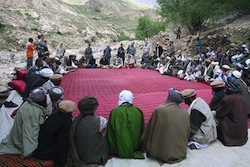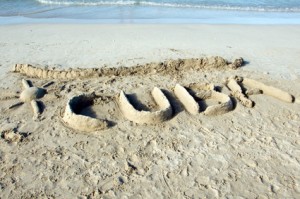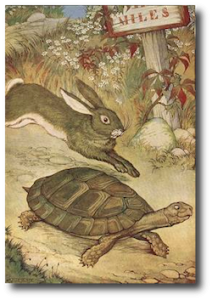Teaching to Empower
While skilled teachers are able to help young people speed up the learning process, the more students teach themselves the deeper their learning will be and the more empowered they will feel. As a result they will be more self-confident and more likely to be effective life-long learners.
For educators who have doubts about these statements, I recommend two videos: Sugata Mitra’s TED presentation about his “Hole in the Wall” experiments (Mitra 2011) and “Confessions of a Converted Lecturer” by Eric Mazur, professor of physics at Harvard University (Mazur 2009).
Once we decide that one of our primary goals in the classroom is to give students the freedom to teach themselves, we must ask ourselves how we can offer minimal guidance with maximum effectiveness for student learning. To answer this question I offer an outline of a multi-faceted unit I developed for an eighth grade World Cultures class. This template can be adapted for a variety of disciplines on the middle school and high school levels.
Promoting student-directed learning
After a brief study of Cuba that includes following the country in the news, reading the CultureGram on Cuba (CultureGrams Online Edition, ProQuest 2013), and providing students with other background information, I introduce the question, “Should the United States end the embargo on Cuba?”
(In a similar unit later in the year I may let students devise their own prompts on a topic of interest relating to the country or culture region we are studying. Nevertheless, the approach outlined below remains essentially the same.)

With our research question in mind, I guide the students through the use of available subscription databases as well as how to evaluate websites. In fact, one subscription database, EBSCO, has a helpful article on evaluating websites (EBSCO Host 2013). Emphasis is placed on the advantages of peer-reviewed sources as well as other scholarly sources that are current and relatively free of bias.
While students in middle school tend to go first to Britannica or Grolier Online, I will take the time to walk them through some of the features of EBSCO, especially “Points of View.” Some advanced eighth graders and high school students are ready for JSTOR, but I would only share this resource with students privately as the articles are too sophisticated for the average middle school student. Typically I will require a minimum number of sources, as well as a variety of sources representing different viewpoints and perspectives.
Finding deeper connections
As the students take notes and attempt to analyze their sources, I employ a technique called “connect-extend-challenge” from the book, Making Thinking Visible (Ron Ritchhart 2011). Often students do not know how to deepen, or perhaps even begin, their analysis of documents. I tell them to begin by making connections with previously learned material as well as between and among the various sources they have found while doing their research.
To advance from superficial to more sophisticated connections (and therefore deeper analysis), I guide the students through the process of “extending” their connections. In doing so they may encounter “challenges” that make them reassess the validity of their connections. For example a student may make a connection between the Cuba embargo and Jeffersonian embargos leading up to the War of 1812. To extend this connection I might ask the student to investigate the causes or results of each embargo. Ultimately it would be up to the student to find valid parallels or to determine that the connection does not help advance her thesis regarding the current U.S. embargo against Cuba.
This is a good time to introduce—or reintroduce—the concept of metacognition. As students ask themselves why one connection stalled at a superficial level, why another broke down when extended, and why a third revealed a new insight, they are thinking about themselves as thinkers. Students may be vaguely aware of their ability to think more abstractly at this age, but I find they are intrigued by research relating to cognitive development. Simply mentioning Piaget’s seminal work on the shift from concrete to formal operations gives adolescents a sense of their increasing cognitive powers.
Synthesis of ideas takes place during the research and analysis phases as well as during the process of preparing one’s ideas for sharing with others (which may take the form of a written document or an oral presentation). I make explicit to the students that analysis and synthesis may reveal gaps that lead to additional research, just as additional research will likely lead to further analysis and synthesis.
It is critical to allow sufficient time for this process. If the teacher sets up the unit for a linear process encompassing only research, analysis, and synthesis, students will not fully appreciate the ongoing dialectic among these three areas that results in deeper, more sophisticated insights. Note that the role of the teacher as guide is critical, yet the students are empowered to do all the intellectual heavy lifting.
Grit and perseverance
Some of the more concrete thinkers in the class may experience a great deal of frustration with analysis and synthesis of ideas. This is a good time to share with the class a brief synopsis of recent research on the value of “grit.” In the July/August 2013 issue of the Association for Psychological Science journal Observer, Angela Duckworth and Lauren Eskreis-Winkler use the fable of the tortoise and the hare as a reminder “that effort and stamina are required to accomplish anything worthwhile in life (Eskreis-Winkler 2013).”
The authors go on to ask the question, “Can students be trained to develop greater tolerance for effortful, focused, and not-altogether-pleasant deliberate practice?” To me an obvious first step is simply bringing to the students’ attention the fact that modern social science studies confirm the ancient wisdom of the fable that perseverance always out-performs raw talent.
Whether in school or later in the work place, our students will find themselves in groups where a given task will be frustrating. I ask my students explicitly, “When will you give up relative to the rest of the people in your group?” This, again, is one more way in which we empower students by making them self-aware.
Paralleling adult skills
Whether the presentation of the students’ work is written or oral, I attempt to model the assignments as closely as possible on work done in the professional world. Even students in the middle school years should be able to see how the skills listed in the grading rubric parallel skills they will rely on as adults. For example a rubric for oral presentations will include pacing, volume, eye contact, voice variation, and engaging the audience because these are skills and techniques needed for success in a wide variety of professions.
In actuality we are not really “teaching” these skills. When students give a formal speech in class, they receive feedback from peers and the teacher based on the rubric. They may even videotape the speech and use the rubric to evaluate themselves. In subsequent speeches, as they attempt to improve in their weaker areas, they are in effect teaching themselves the skills and becoming empowered as a result.
Earlier I mentioned the importance of group work as a way to help students develop effective social skills. For decades I have begun the new school year by asking students, “What is the most important thing you learn in school?” Once they have sufficient time to think it over and throw out ideas, I tell them my opinion: “The most important thing you learn in school is how to interact maturely with other people.”
If we want to help our students become effective, resilient adults, we must incorporate social skills into the curriculum. There is a very practical reason why for nearly a century professionals from virtually all fields have flocked to Dale Carnegie courses on leadership training (Carnegie 2013) that began as “How to Win Friends and Influence People” (first published as a book in 1936); they know that effective social interactions in the work place are critical to success. This is why I believe group dynamics are essential in any curriculum designed to empower students.

Unlike in a debate (which Dale Carnegie points out one can never truly win), the skills incorporated into the jirga all mirror those needed in the workplace. Furthermore, by grading students with a rubric that clearly outlines our pedagogical objectives, we follow the advice of Grant Wiggins to “assess what we value so students will value what we assess” (Wiggins 2012).
Prepared for an uncertain world
In The One World School House: Education Reimagined, Salman Khan, founder of Khan Academy, quotes the view of Duke University professor Cathy N. Davidson that “Among the world’s children starting grade school this year, 65 percent will end up doing jobs that haven’t been invented yet” (Khan 2012).
Khan points out that “Since we can’t predict exactly what today’s young people will need to know in ten or twenty years, what we teach them is less important than how they learn to teach themselves” (Khan 2012).
In fact, the greatest gift we can give to our students is to teach them to teach themselves. That is true empowerment.
Bibliography

CultureGrams Online Edition ProQuest. Cuba. 2013.
EBSCO Host. How to Evaluate a Website. 2013.
Eskreis-Winkler, Angela Duckworth and Lauren. “True Grit.” Observer, July/August 2013.
Khan, Salman. The One World School House: Education Reimagined. Hachette Book Group, 2012.
Mazur, Eric. Confessions of a Converted Lecturer. November 2009.
Mitra, Sugata. Hole in the Wall. 2011. www.hole-in-the-wall.com (accessed 07 28, 2013).
Ron Ritchhart, Mark Church, Karen Morrison. Making Thinking Visible: How to Promote Engagement, Understanding, and Independence for All Learners. San Francisco, California: Jossey-Bass, 2011. Reviewed here at MiddleWeb.
Wiggins, Grant. Authentic Education. 2012. www.authenticeducation.org (accessed 07 28, 2013).
Joseph Ball is in his thirty-fourth year on Newark Academy’s humanities faculty. Earlier he served as a Peace Corps volunteer at Yala Teachers College, Thailand, and as an educator at The Community School, Teheran, Iran. Contact him at jball@newarka.edu.





































Joseph,
Your ideas really resonate with my own beliefs. I work in an inquiry school, on the upper elementary level. We try to ensure that our students grow into confident individuals who are aware of their preferred learning styles, and are critical thinkers who make connections with the world around them. Visible thinking routines are an important part of our teaching practice. This week, we had a workshop with Kath Murdoch, one of the leading specialists in inquiry-based learning. She mentioned Sugata Mitra’s inspiring work as you did in your article.
I think that inquiry is the future of education, I fully agree with your statement that “our greatest gift to our students it to teach them how to teach themselves”.
Lada
Agree with Joseph Ball on these points. Building on these thoughts, I would also challenge the students to ask themselves the right questions. For example, if they can determine -without prompting from a teacher – that comparing the Jeffersonian and Cuban embargoes would support or undermine their thesis, then they are asking the right question (one out of many, in fact). It shows students how to arrive at the answer rather than grasping at straws for the right answer. In my experience, it was learning to ask the right question that turned me into an adult-like thinker :) Thanks, Joe!